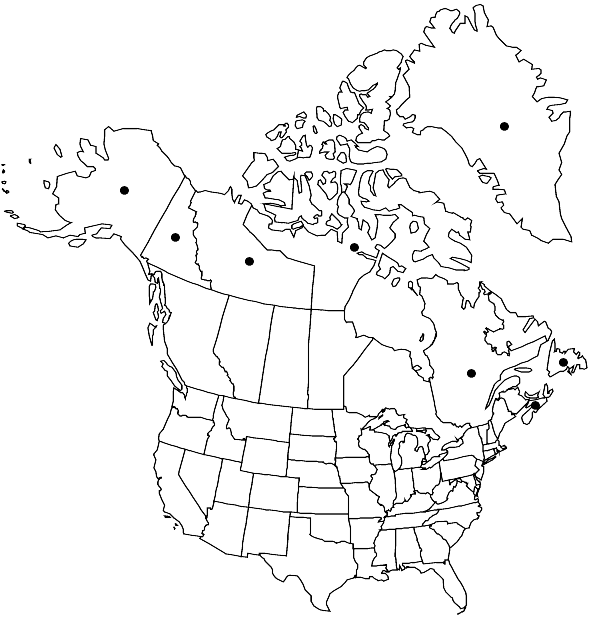Difference between revisions of "Timmia norvegica var. excurrens"
Bryoph. Itin. Pol. Norv., 121. 1906,.
FNA>Volume Importer |
imported>Volume Importer |
||
| Line 51: | Line 51: | ||
|publication year= | |publication year= | ||
|special status= | |special status= | ||
| − | |source xml=https:// | + | |source xml=https://bibilujan@bitbucket.org/aafc-mbb/fna-data-curation.git/src/bb6b7e3a7de7d3b7888a1ad48c7fd8f5c722d8d6/coarse_grained_fna_xml/V27/V27_215.xml |
|genus=Timmia | |genus=Timmia | ||
|species=Timmia norvegica | |species=Timmia norvegica | ||
Revision as of 22:31, 27 May 2020
Plants generally smaller and more delicate than those of var. norvegica. Leaves 2–6 mm, 0.5–0.6 mm wide at mid-limb; cells of mid-limb lamina 6–10(–11) × 6–9(–10) µm; costa excurrent, smooth on abaxial surface of sheath, smooth or slightly papillose on abaxial surface of the limb, with one–several teeth at back near the apex; base of costa pale and not strongly attached to the stem; stem tips often with loose deciduous clusters of almost linear leaves (ca. 3 × 0.1–0.2 mm).
Habitat: Calcareous areas, often on shaded limestone cliffs near rivers in Arctic and boreal regions, intermixed with other mosses, including other taxa of Timmia
Elevation: low to moderate elevations (0-1500 m)
Distribution

Greenland, Nfld. and Labr. (Nfld.), N.W.T., Nunavut, N.S., Que., Yukon, Alaska, Eurasia (Scandinavia, Switzerland, Poland, Russia), Atlantic Islands (Iceland).
Discussion
Variety excurrens is known also as a Quaternary subfossil from New York and Vermont. Variety excurrens is not known to occur with sporophytes, but the deciduous leaves no doubt act as vegetative propagules.
Selected References
None.